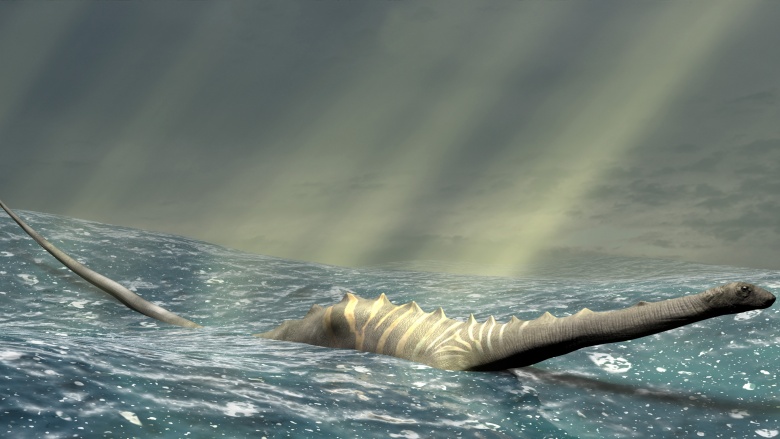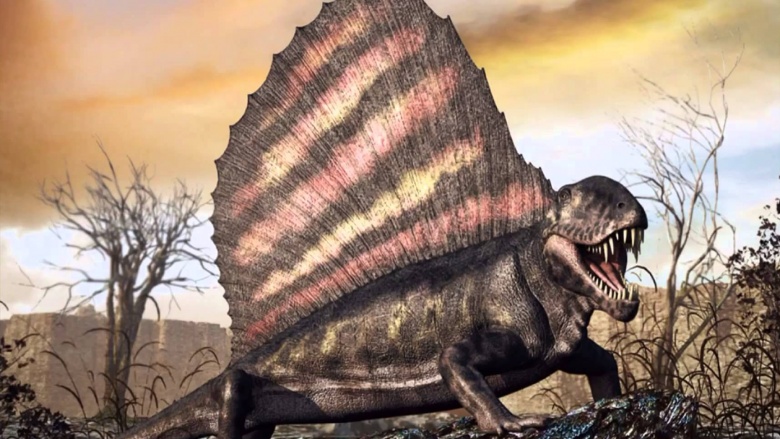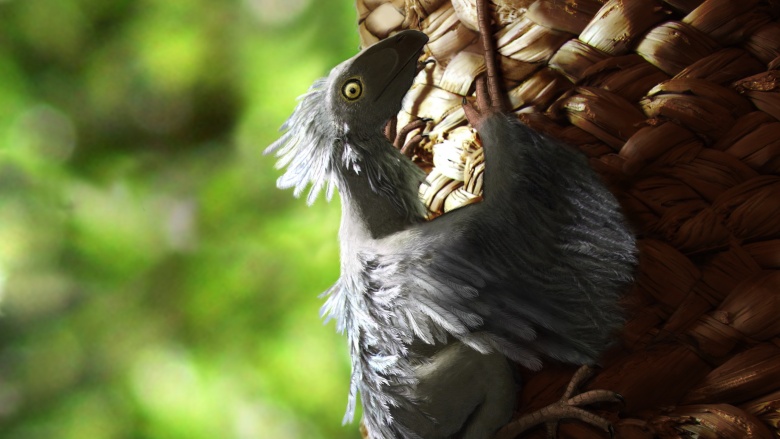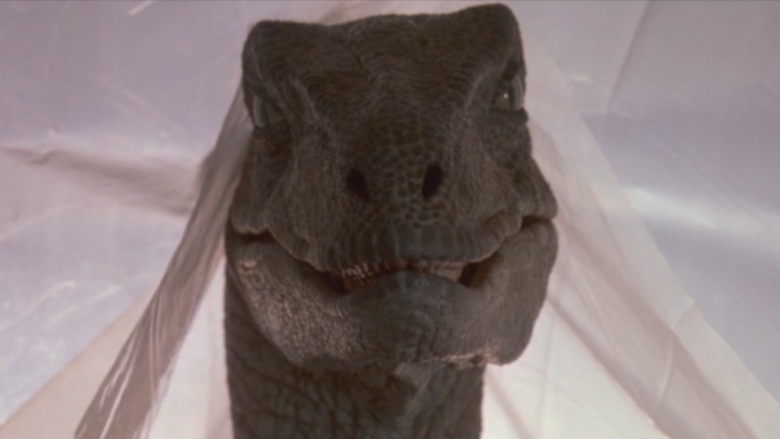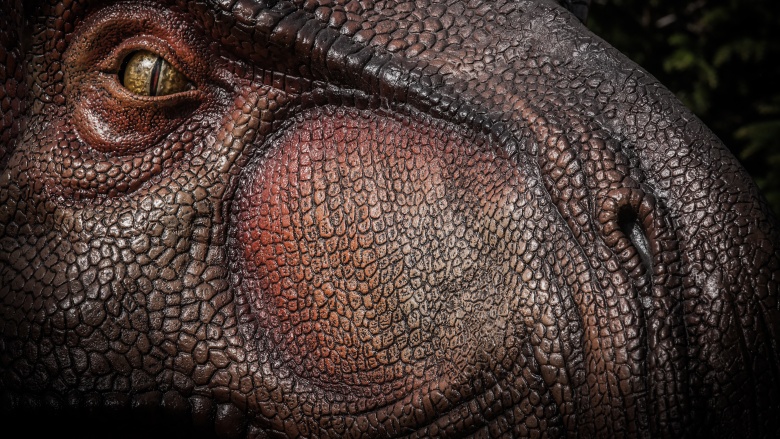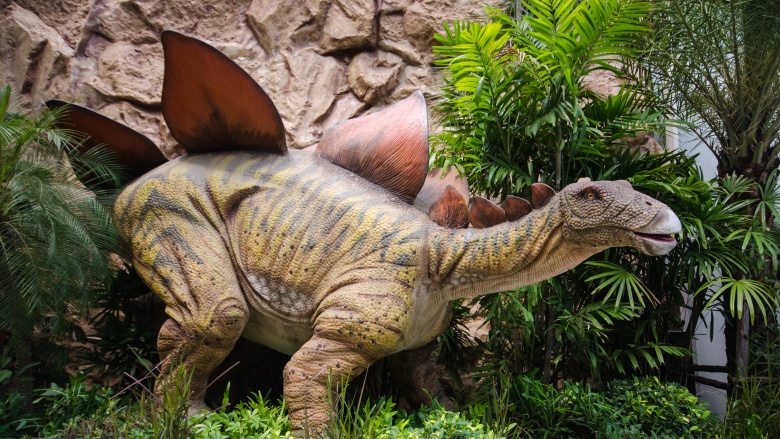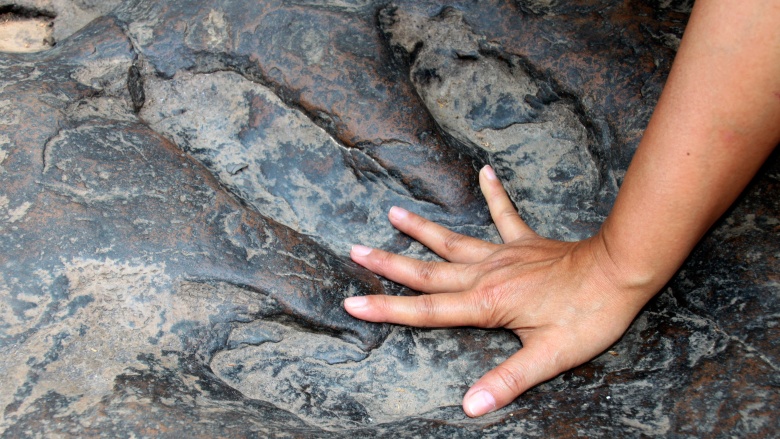False Facts About Dinosaurs You Always Thought Were True
Since their discovery in the nineteenth century, dinosaurs have held a unique place in our imaginations. However, the established scientific consensus on dinosaurs has dramatically changed over the years, though a lot of people haven't been paying attention. That, combined with Hollywood's propensity to stretch truth for the sake of entertainment, has unfortunately given birth to several myths about dinosaurs. We're here today to set the facts straight on some of the most persistent misconceptions about these extinct wonders.
Plesiosaurs and pterosaurs were dinosaurs
The general public seems confused about which prehistoric creatures were and were not dinosaurs. Pop culture has, in part, fueled these misconceptions. Case in point: the average man on the street likely classifies long-extinct animals like the aquatic plesiosaurs and the flying pterosaurs as dinosaurs.
Yet, none of these aforementioned creatures were dinosaurs. They were reptiles that evolved to fit ecological niches and just happened to live — and go extinct — around the same time as dinosaurs. See, a dinosaur was a specific type of animal, with a specific set of characteristics. Non-avian dinosaurs were largely land-dwelling animals with, their legs below their bodies. Compare this physiology to that of modern reptiles (e.g., lizards, turtles, crocodilians) that have their legs off to the sides of their bodies. Plesiosaurs and pterosaurs had legs like the latter, and while the jury's still out whether they knew how to use them, it's at least conclusive that they weren't dinos.
Dinosaurs were cold-blooded
It's more accurate to re-label the terms "warm-blooded" and "cold-blooded" as "endothermic" and "ectothermic." Mammals and birds are endothermic, so they can generally regulate their own internal body temperature. Ectothermic animals, like reptiles, amphibians, and about everything else, must rely on the environment to regulate their temperature. This is why you don't see a lot of snakes in the Arctic. Well, except for this one.
A popular misconception is that dinosaurs were ectothermic, as some scientists believed in the nineteenth century. If true, this would mean that dinosaurs were more sluggish, tail-dragging creatures, like their modern reptile brethren. Fast-forward to modern day, and the scientific consensus is now quite different. Some studies have found that dinosaurs were mesotherms, or somewhere in the middle between warm and cold-blooded, while other experts concluded that dinos were endothermic, like extant mammals.
Debate about this subject will likely continue, but it is safe to say that dinosaurs were probably not completely cold-blooded ectotherms, like those toads you keep finding in your pool filter.
Dimetrodon was a dinosaur
You often see dimetrodon depicted alongside dinosaurs in various artist renderings, children's movies, and toy sets. There are several reasons why this placement is both incorrect and misleading. First of all, dimetrodon lived about 40 million years before the first dinosaur. Dinosaur scientists (if there were such a thing) would probably be digging up dimetrodon fossils to study.
This leads us to our second point: dimetrodon was not a dinosaur. In fact, it wasn't a reptile either. Then what was it? An alien? Maybe, but probably not — more likely, Dimetrodon was a synapsid. What's a synapsid? All mammals and their ancestors are synapsids, that's what. That's right, dimetrodon is more closely related to human beings than to dinosaurs.
Dimetrodon may look like a reptile, and indeed it did share a common ancestor with early reptiles, but the two lines diverged about 325 million years ago. Prehistoric reptiles were the forerunners of dinosaurs, modern-day reptiles, and birds. Early synapsids are the forerunners of mammals. So look at the above picture again, and say hi to your grandma.
Dinosaurs are extinct
The majority of the public believes that dinosaurs went extinct about 65 million years ago. This belief is incorrect, since birds are technically dinosaurs. It's, therefore, more accurate to say that all non-avian dinosaurs went extinct about 65 million years ago. The roughly 13,000 extant species of birdie buddies evolved from theropods — the family of dinosaurs that included bipedal carnivores like the popular Tyrannosaurus Rex and velociraptors.
The forebearers of modern-day birds, meanwhile, survived the mass extinction at the end of the Cretaceous Period, flourishing to eventually wind up on humans' dinner tables during Thanksgiving and begging for scraps of bread in parks. Their ancestors would be proud.
Velociraptors were huge and incredibly intelligent
Jurassic Park is an entertaining novel/film franchise, but in many ways an inaccurate one, and not just because of the "bring back dinosaurs" thing. Example: the velociraptors in the films are larger than human beings, covered in scales, and as intelligent as bottlenose dolphins. However, Steven Spielberg's choice to depict the velociraptors in this manner was driven more by entertainment value than paleontological fact.
In truth, velociraptors were not scaly like lizards, but were instead covered in feathers. In fact, many dinosaurs had feathers. Regarding their intelligence, velociraptors were moderately more intelligent than the average dinosaur, but they weren't exactly clever girls, nowhere near the mental equivalent of the smartest of today's mammals. Finally, real-world velociraptors were much smaller than those in Jurassic Park. They might have grown to about waist height on an adult human being, but that's it.
Needless to say, this isn't exactly the deadly predator depicted in Jurassic Park. Utahraptor is a better candidate for the creatures that appeared in the movie, but scientists didn't discover it until after Spielberg had already shot the film. Then again, even if they had, the name Utahraptor doesn't exactly fill us with dread.
Tyrannosaurus Rex vision was based on movement
Another false fact propagated by Jurassic Park is that the T. rex had limited vision. In the film, Dr. Grant states that a T. rex can't see you if you hold still, since its vision is based on movement. The visual limitation certainly made for a suspenseful scene, but there is absolutely no scientific validity to it. In reality, T. rex had excellent eyesight — a study entitled "Binocular Vision of Theropod Dinosaurs," published in the Journal of Vertebrate Paleontology in 2006, concluded that T. rex had binocular vision on par with modern-day hawks. In fact, it could probably see better than human beings. So in real-life, that T. rex could have seen and eaten Dr. Grant, Dr. Malcolm, the lawyer, and both those kids, but that would have made for a pretty short movie.
Two-brained dinos
A paleontologist named Othniel Charles Marsh hypothesized in the 1800s that larger dinosaurs, like brachiosaurus and stegosaurus, had two brains — one in their head and one in their rump. The notion was that these creatures' head-brains were too small to effectively control their massive bodies without help. Stegosaurus, for example, had a head-brain the size of a lime. Marsh noticed that the vertebral canal over these large dinosaurs' hips were actually bigger than the brain cases in their skulls. Perhaps, he figured, this extra space was used to house a secondary booty-brain.
Unfortunately for Marsh, his hypothesis is wrong. More likely, the space stored glycogen for when these animals needed extra energy. These dinos' brains may have indeed been small compared to the rest of their bodies, but they were more than sufficient to keep them walking along, eating vegetation, and, in the stegosaurus's case, swing that epic spiked tail — the awesomely-titled thagomizer. By the way, we have The Far Side to thank for that name.
Dinosaurs lived alongside humans
We didn't think that we'd need to debunk this myth, yet some troubling statistics forced our hand. A poll commissioned by YouGov in 2015 found 41 percent of Americans believe human beings probably, or definitively, co-existed with dinosaurs at some point in history. In some sense, this is true, as we've established that birds are dinosaurs. Yet, we believe that the respondents to this poll leaned more toward the popular perception of non-avian dinosaurs, like T. rex, stegosaurus, velociraptor, and the like.
There is a definite religious divide on this question, as most people who responded "yes" also identified themselves as born-again Christians. We respect everyone's religious beliefs, but facts are facts. Non-avian dinosaurs died out 65 million years ago. Early humans evolved in Africa about six million years ago. That's quite a gap.
There're some cherry-picked pieces of pseudo-evidence for the dinosaur-human coexistence hypothesis, but none hold up to scrutiny. For example, there's a 12th-century carving at the Ta Prohm Temple in Cambodia that some say is a stegosaurus. Spoiler alert: it's probably a rhinoceros. Other pieces of "evidence" include the preserved footprints of what creationists claimed were dinosaur and human tracks, side-by-side. Nope, this wasn't Mario and Yoshi — some of the dinosaur tracks have simply eroded over time to look human. There is simply no good evidence that dinosaurs and humans ever met, aside from that time we took the DeLorean to prehistoric Hill Valley during the Back to the Future Ride at Universal Studios.

